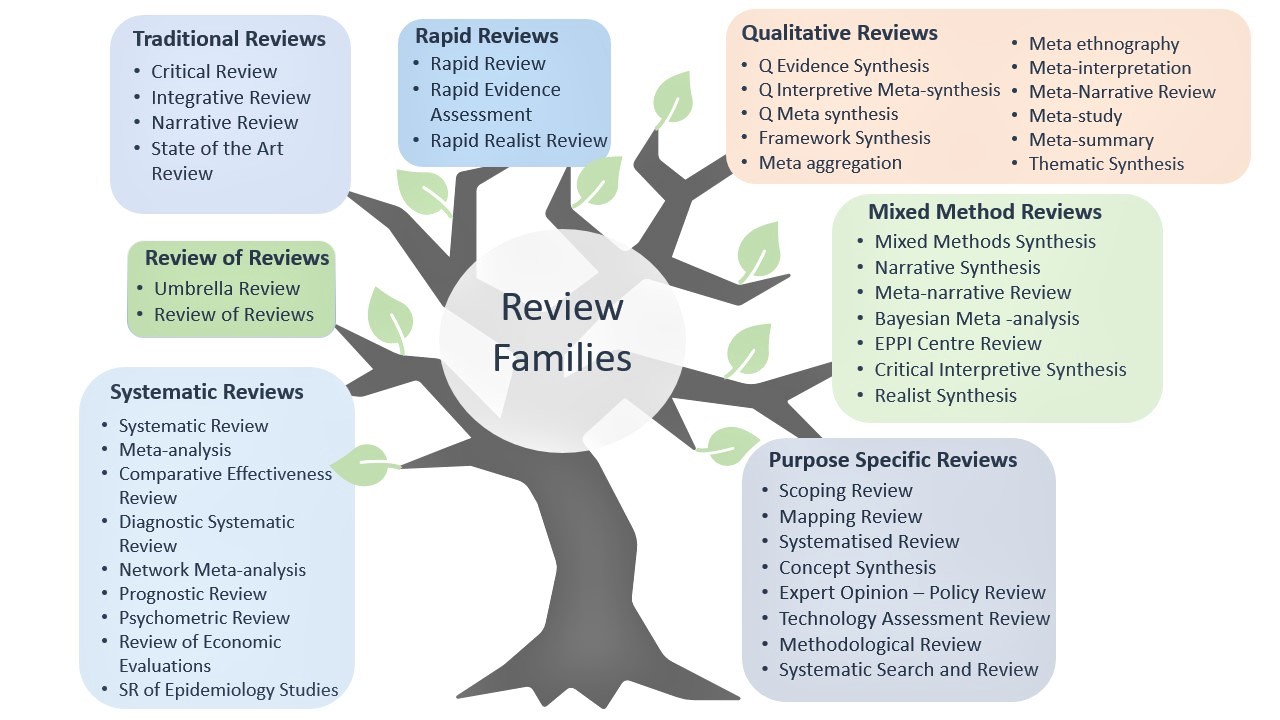

Graphic based on the work of Sutton et al., (2019) on 'Review Families'.
|
Clearly articulate the research question or objective of the review. This will guide the entire process.
|
|
Extract relevant data from the selected studies using a standardized form. This includes information on study design, participants, interventions or exposures, outcomes, and other pertinent data.
|
|
Determine specific criteria for selecting studies, including the type of studies, population, interventions or exposures, outcomes, and any other relevant factors.
|
|
Assess the quality and risk of bias of the included studies. This step typically involves evaluating the study design, methodology, sample size, data collection, and potential sources of bias. More...
|
|
Develop a comprehensive search strategy to identify relevant studies. This typically involves searching electronic databases, such as PubMed, & CINAHL Ultimate, as well as additional sources like grey literature.
|
|
Interpret the findings of the review, considering the strengths, limitations, and implications of the included studies.
|
|
Independently screen and evaluate the identified studies based on the predetermined inclusion and exclusion criteria. This usually involves multiple reviewers, and any disagreements are resolved through discussion or a third-party arbiter. More...
|
|
Consider submitting your systematic review for peer review and publication in a reputable journal to ensure the quality and validity of the work.
|
Different types of reviews:

References
Grant, M.J. and Booth, A. (2009), A typology of reviews: an analysis of 14 review types and associated methodologies. Health Information & Libraries Journal, 26: 91-108. https://doi.org/10.1111/j.1471-1842.2009.00848.x
Sutton, A., Clowes, M., Preston, L., & Booth, A. (2019). Meeting the review family: exploring review types and associated information retrieval requirements. Health Information & Libraries Journal, 36(3), 202-222. Full Text